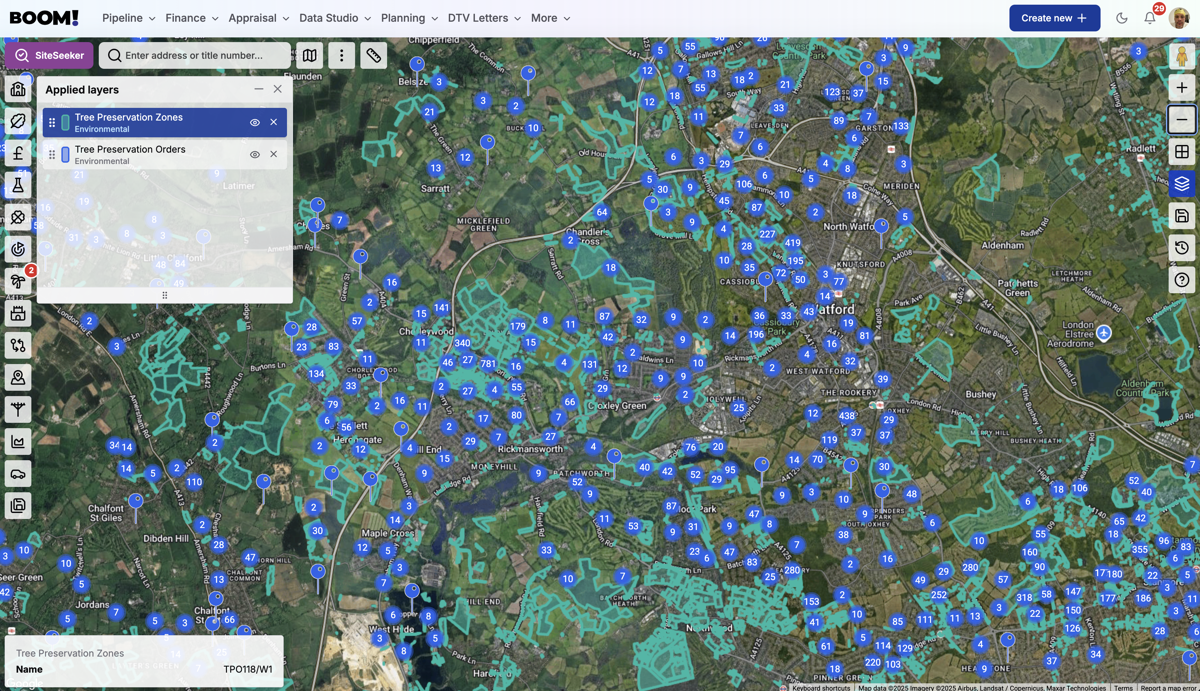Tree Preservation Orders (TPOs): What You Need to Know







Hundreds of thousands of Tree Protection Orders are enforced throughout the UK, covering trees in both urban and rural locations. Our new dataset is designed to help you avoid legal complications.
If you're planning to build on existing property or develop new land, it's crucial to consider any trees present. Checking for Tree Preservation Orders (TPOs) should be a fundamental part of your land assessment, as these orders can significantly impact your project.
What Exactly is a Tree Preservation Order?
A Tree Preservation Order (TPO) is issued by local planning authorities to protect trees of significant value and preserve local woodlands. These orders prohibit cutting down, topping, lopping, uprooting, willful damage, or destruction of trees without the local planning authority’s written consent.
A TPO can be applied to any tree, regardless of size or species. In a conservation area, all trees are automatically protected by a TPO, and planning permission is required for any work involving them
There are four main types of TPOs:
Individual: Applies to a single tree;
Group: Applies to a collection of trees that together have amenity value;
Zone: Covers all trees within a defined area at the time the order was made;
Woodland: Protects all trees within a woodland area, regardless of age.
Damaging or destroying a protected tree is a criminal offense. Failure to obtain council permission can lead to prosecution and fines ranging from £2,500 to £20,000.
Why Developers Must Be Aware of TPOs
If you acquire property or land with TPO-protected trees, you become responsible for their care and maintenance. This includes obtaining consent for any work that may affect the trees' health or structure, which can be a lengthy process. However, if planning permission is granted that includes felling a TPO-protected tree, that permission overrides the TPO
Introducing New TPO Data
To assist developers in identifying Tree Preservation Orders (TPOs) during land assessments, we've updated 2 data layers included within the “Environmental Layers” Panel of Data Studio being: Tree Preservation Orders and Tree Preservation Zones; the updates include 375,231 TPO’s and 517,772 Zones! These new layers allow you to identify individual trees or specific areas protected by TPOs.